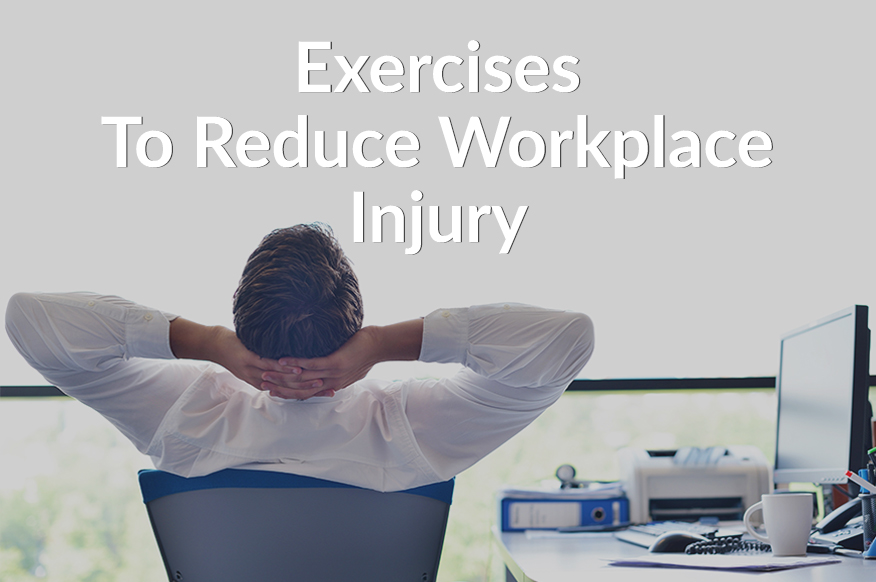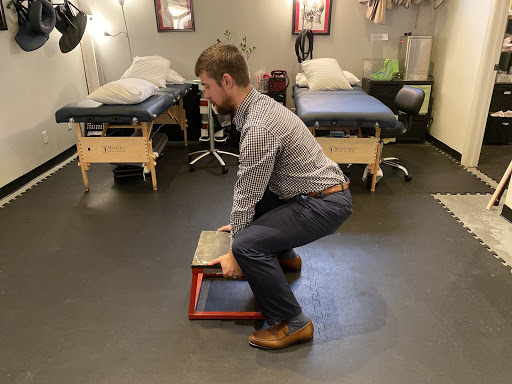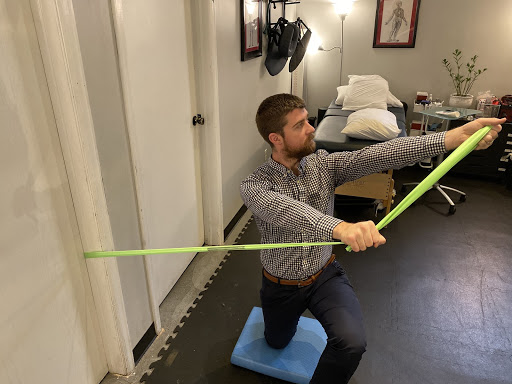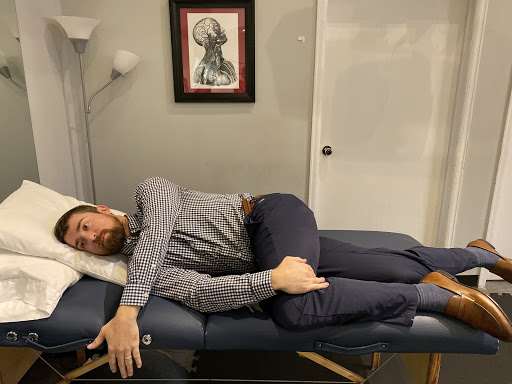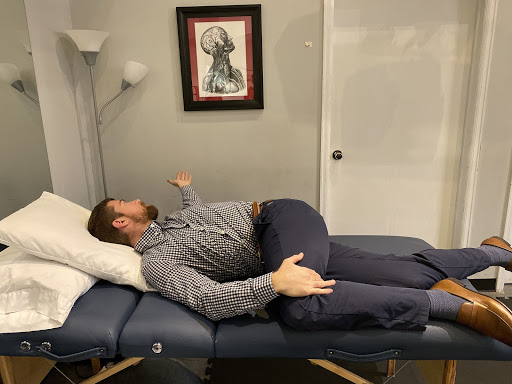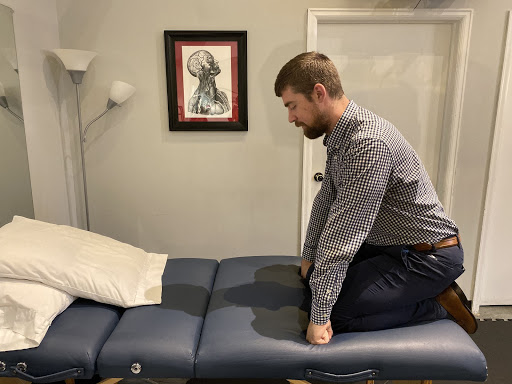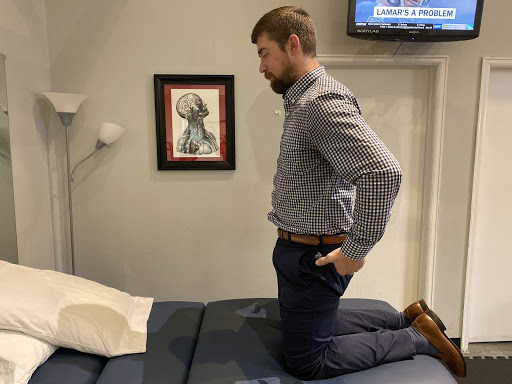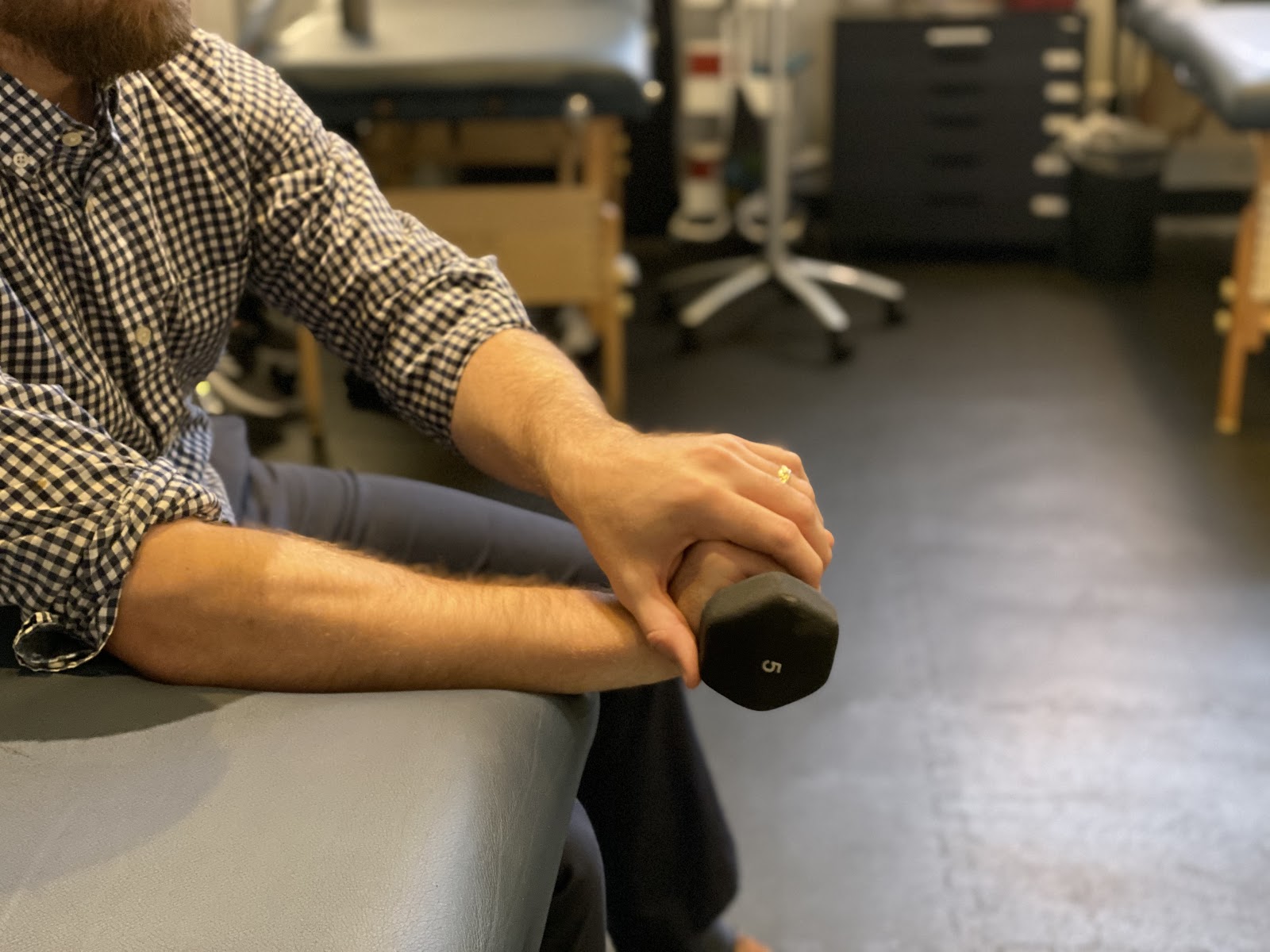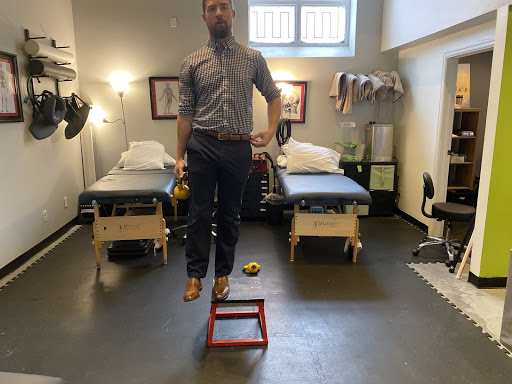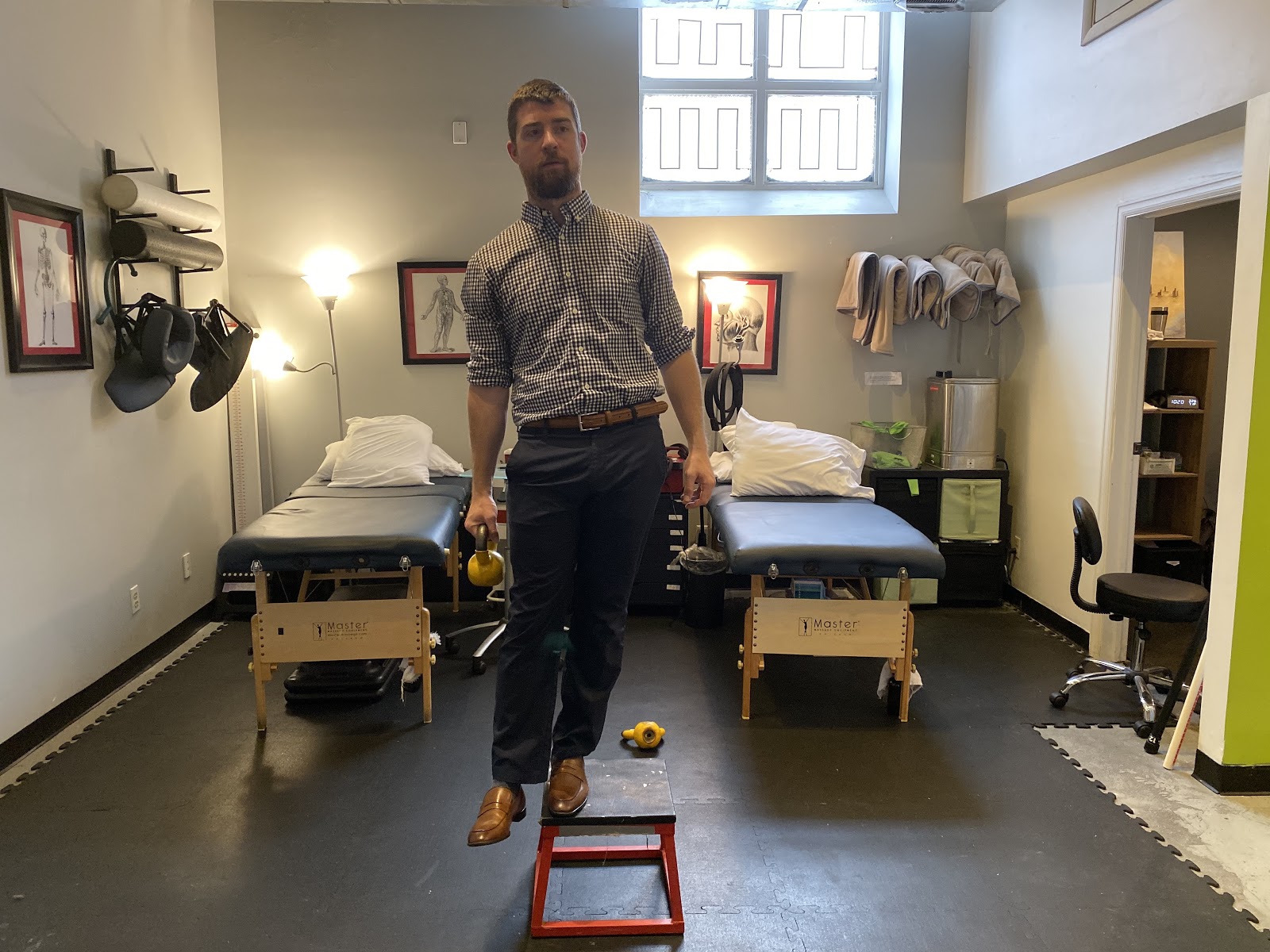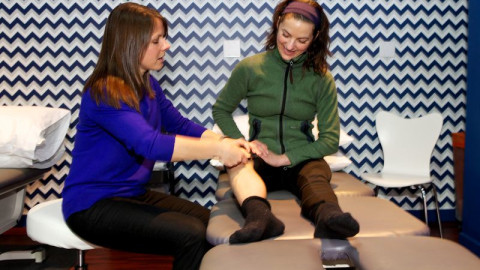Those of us in the physical therapy world are often exposed to a number of different types of injuries. The most common of them (sporting events, skiing, running) we are all familiar with and generally understand how and why they happen. The unexpected injuries, like those that happen in the workplace, can be equally as serious and present a challenge both in rehab and in prevention. In this blog we’ll address a few of the common issues we see in our clinic on a regular basis and show you ways to avoid some of them from happening in the first place. Whether you work at a desk or in a warehouse, these moves can help you to avoid work related injuries!
Common Work Related Injuries:
- Low back strain from lifting objects
- Wrist/hand pain from repetitive movements (typing, construction)
- Hip pain from standing for prolonged periods of time
How To Protect Your Back At Work
The first place we’ll start is likely not a surprise to most people and can also be relatable to anyone that’s ever “thrown out their back” when picking up something heavy. Lifting injuries occur all the time in the workplace, though they can be preventable. Since most people don’t understand what “lifting with your legs” actually means, here is some insight on how to reduce the risk of injury at work while lifting and some information about what to do in the early stages after the injury before you’re able to schedule your physical therapy visit.
First, there is a lot of misinformation regarding lifting mechanics and the ‘dangers’ of lifting, creating a fearful mentality of improper form. Though form is important in order to put in you an advantageous position to pick something heavy up, the best way to prevent injury is to be comfortable in the lifting movement and to have the right level of strength for what you are trying to lift. If you are not accustomed to lifting heavy objects, it can be more difficult for your body to be stable while lifting heavy objects and can possibly cause injury. With that being said, resisted exercise and body awareness are your two best bets for injury prevention.
Here are two common mistakes we find when lifting:
- Having the load too far away from your body (first picture), not allowing your big muscles do the work.
- Keeping a’ neutral’ spine (second picture), and using your legs to stand up get upright can prevent your back muscles from having to take the brunt of the force.
Here are a few exercises that can be used as preventative measures in lifting:
Deadlift: 
It has lift in the name so it makes sense right? This move follows similar principles we have already discussed such as keeping the load close to your body, maintaining a neutral spine, standing with your legs and using your hips to drive you forward. Think of standing up without ‘pulling’ from your back. Start light and get comfortable hinging at your hips before increasing weight.
Reverse Chop:
Rotating with resistance seems like an odd exercise, but if you’ve ever lifted anything up and out of your trunk or picked something off the ground to put on your kitchen counter you’ve performed that combination of movements. By keeping your arms straight and slightly rotating your trunk as you lift your arms up and across can force those back muscles to kick in to stabilize against the band.
As previously mentioned, lifting is not bad! Using your back muscles is not bad. But if your body isn’t accustomed to having to use those muscles though, that can cause an overload (aka injury). Help yourself prevent injury by getting stronger in between work related lifting and get comfortable with movements that you may have to reproduce in the workplace and you’ll be feeling fine in no time. Ask your local PT to perform a movement assessment to ensure you have the baseline motions under control before you test them out in the workplace, or in the gym.
If, unfortunately, you do find yourself with back irritation here are a couple things that can help calm back pain before you see a PT.
Cat/Camel:
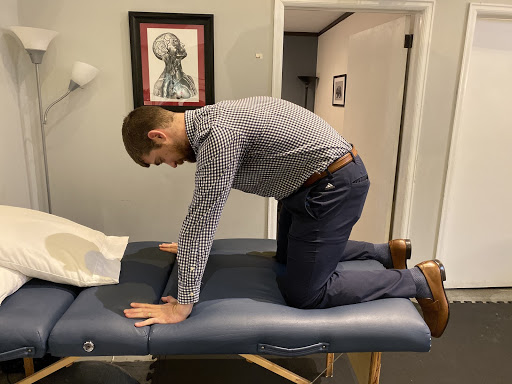
A classic yoga move with a little different emphasis on whole spinal motion. When you have an injury, your body can sometimes be ‘fearful’ of movement due to its previous input from the injury. Performing this motion can desensitize those injured tissues and allow you to improve motion.
Open Books:
Rotation is a very normal movement that happens in the spine. At the spinal level, joints “open and close” when you bend forward and back as well as with rotation. So, if bending forward/backward is painful, often times rotation can allow you to move with less pain. Again, desensitizing the irritated tissue.
Diaphragmatic Breathing:

Have you ever had a back spasm when taking a deep breath? These muscle spasms are another protective mechanism for your body to try and ‘prevent’ further injury. Breathing through your belly and allowing your stomach to rise before your chest can talk to your nervous system and explain that breathing is helpful thereby reducing your muscle spasm.
Glute Squeeze:
Your glutes are some of the biggest supporters of your low back. Often times, using a companion muscle can help ease the demand, or stress to the low back muscles after injuries. There are two different types of glute activation exercises that should be comfortable and safe in giving your back some support.
How To Prevent Overuse Injuries At Work
The second most common injury at work is typically a repetitive stress injury. If you work on a computer, or are scanning groceries throughout your day, these repetitive movements can lead to an overuse injury. That’s right, you can get tennis elbow without even playing tennis! Since this type of irritation is usually from recurring strain, it won’t come as a surprise to hear that strengthening is your best injury prevention. By exposing your tissues to these movements, your structures are able to build a tolerance to it and won’t become overloaded. Exercise is controlled stress! That being said, often times hand/wrist/elbow tissues can get cranky, so relative rest and lighter loads, or even just muscle activation are needed to start.
Here is the scoop on the injury prevention side: Movement is medicine, so making sure you are changing positions often and trying to identify what specific movements you’re doing frequently and how they influence pain. From a strengthening perspective, challenging the stability of your wrist and hand can increase the capacity for those muscles to support your hand in repetitive movements.
Here is a great preventative exercise that you can use light weights with and still challenge your control-
Bottoms up KB Press:
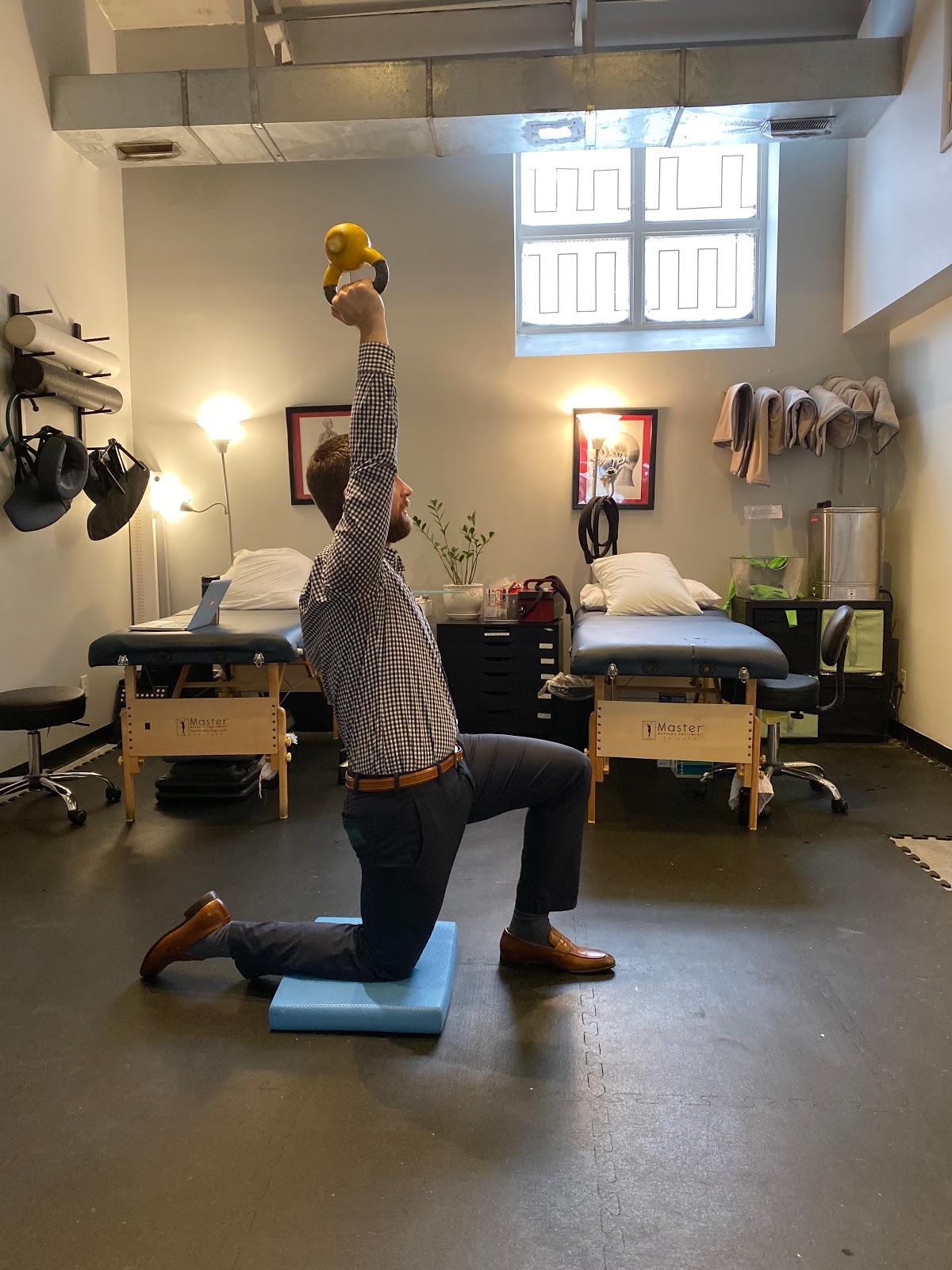
Using the kettlebell bottoms up requires some grip strength and stability! It’s harder than it looks.
Wrist isometrics/eccentrics:
The isometric move has been shown to reduce pain and increase blood flow to the area. By pressing hard with your other hand and not allowing your affected wrist to bend that can help re-introduce load and effort to the strained tissues training them to adapt. This should be low level irritation at the most, this is not a no pain no gain situation! The next exercise group is an oldie but a goodie. The lowering phase of this exercise is actually the most important as it is more controlled stress to the wrist/elbow and can help to build resilience in those muscles. Passively bring the weight up with your other hand, and slowly lower the weight back to the starting position.
If irritation is setting in, try these stretches to see if they can provide symptom relief. Often times mobilizing the wrist joint (rocking back and forth) with your hands resting gently on the floor can not only increase range of motion by providing a light stretch, but it can also lubricate joints that may be stiff from your work demands.
How To Reduce Hip Pain At Work
Finally, if you’re like us, we are on our feet all day– that can cause its own type of strain. Hip pain is a common occurrence for those who are performing standing tasks for extended periods of time.
Can you guess what would be a positive way to prevent pain from occurring? That’s right, hip strength!
Balance and weighted exercises can make it seem like holding up your just your body weight seem like an easier job. Being efficient in these exercises by incorporating both some load (weight) and balance can save you time and can also make for a well rounded activity. In addition to some of these exercises, much like the wrist/hand if there are some overuse issues, sometimes loading is still the answer for reducing symptoms. If pain continues, or increases it makes sense to schedule an appointment for an evaluation by a PT. In the meantime, give these moves a go.
Single Leg Deadlift:

Make sure to keep the load close to your body (like we learned from the lifting information) and think of movement coming from the hinge at your hips not low back.
Hip Dip:
This one can take a bit of practice, but when done correctly you will feel the glute burn! Try to think of your belt line as what is moving. Dip one side of your belt line down below parallel, then bring back up to even/parallel with your other hip. You can even perform this exercise with weight in your hand to increase demand.
These last two are others that can increase load tolerance (like an isometric from the previous section) and another classic stretch for pain relief.
Side Plank:
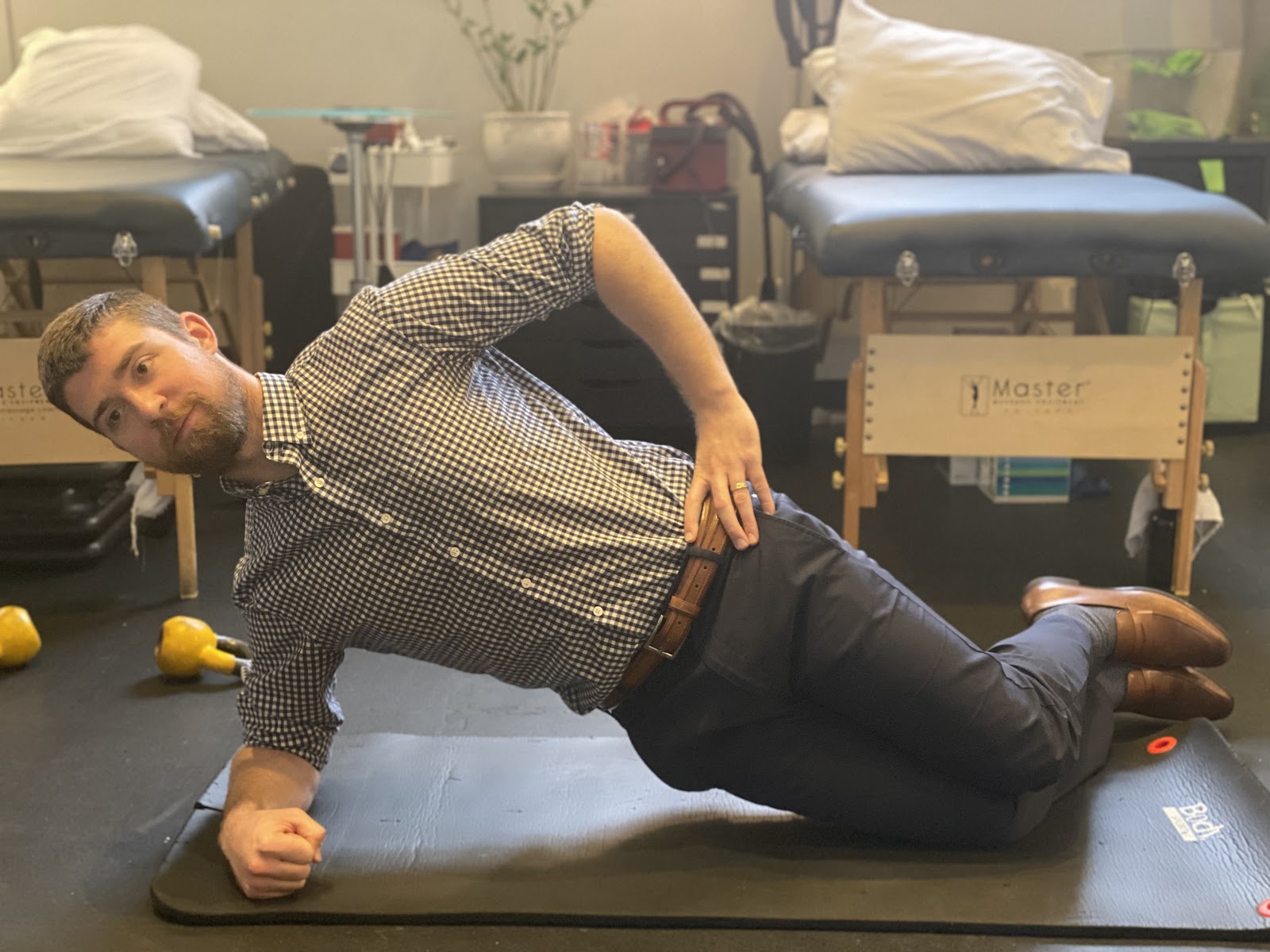
It seems weird to plank when you’re in pain right? This modification of a plank forces the glute muscles to kick in, but typically in a non-painful position so that your body can get used to asking that muscle to fire again. Remember movement is medicine!
90/90 Hip Mob:
This is another efficient stretch/position than can help to improve motion in both hips at the same time and it’s great for pain reduction. Try to think of standing up tall and not cheating with your upper body to get into these positions. The stretch can be felt on both hips and in different areas depending on your level of flexibility. This is a safe position despite its slightly awkward set up as long as you aren’t pushing through pain. Perform this move on both sides!
We all know that sometimes a workplace can be stressful, but it doesn’t need to be painful too! Try to use a few of these as tools to prevent pain, or as a first step in reducing irritation that may already be setting in. If you have questions about these exercises, please feel free to reach out to a PT and we’d be happy to help you prepare a work related injury prevention plan or address any nagging work-related injury that may occur.

